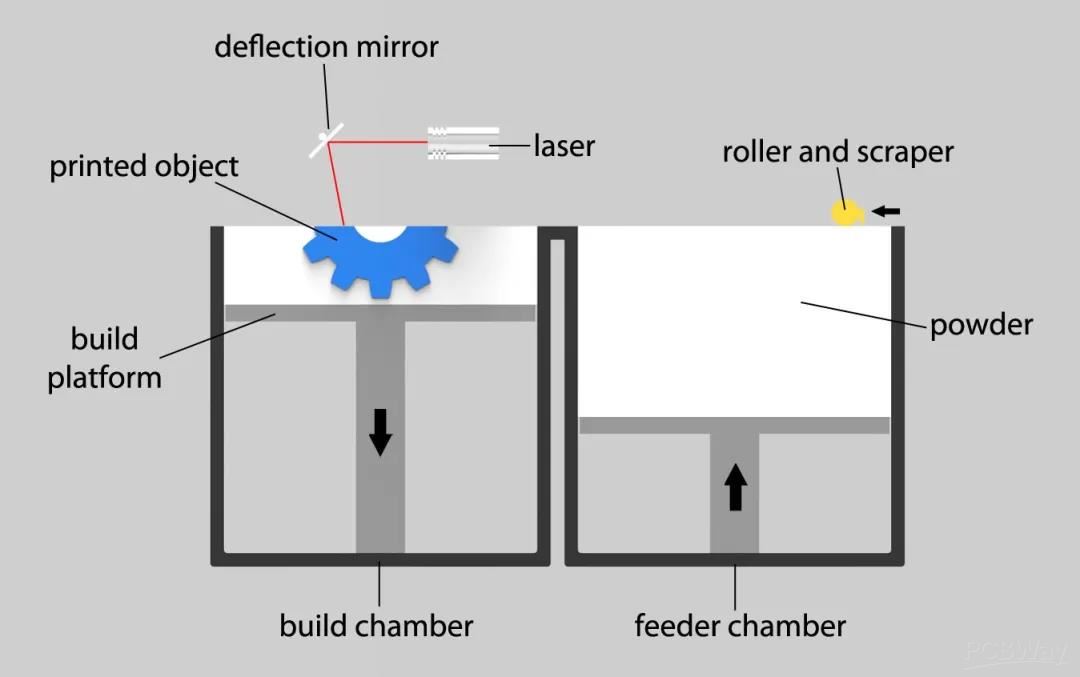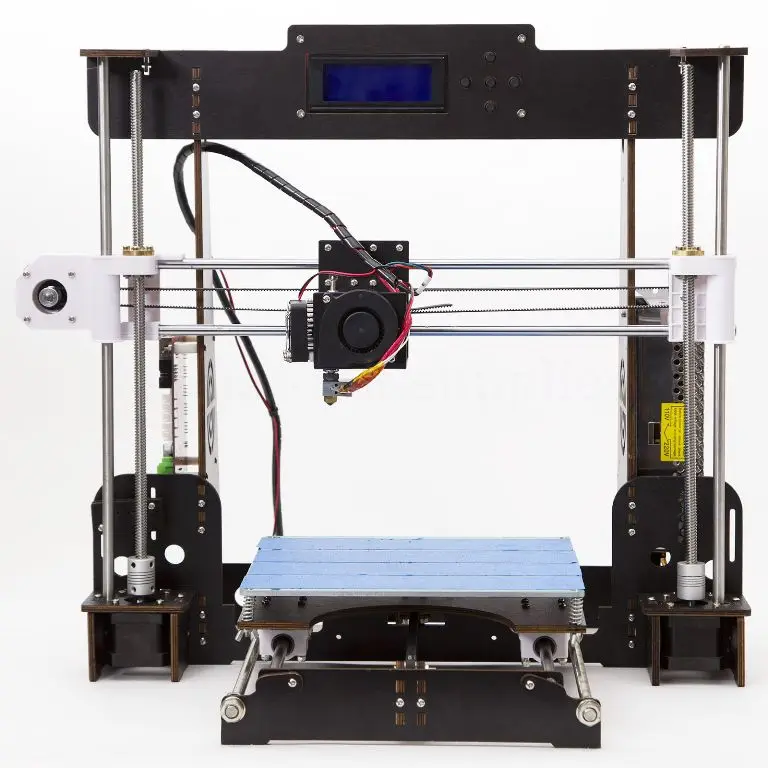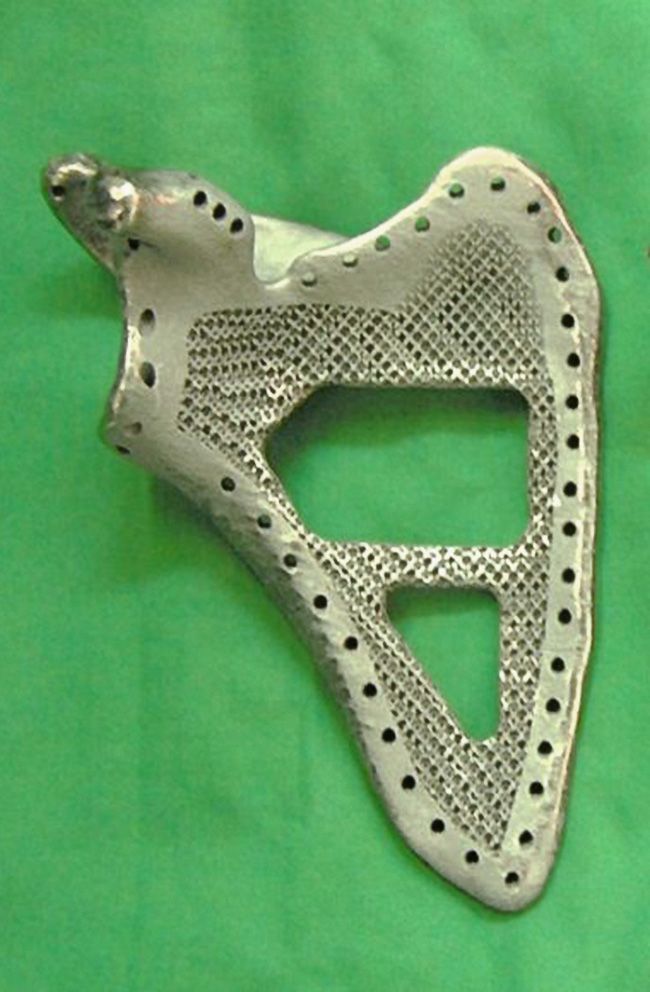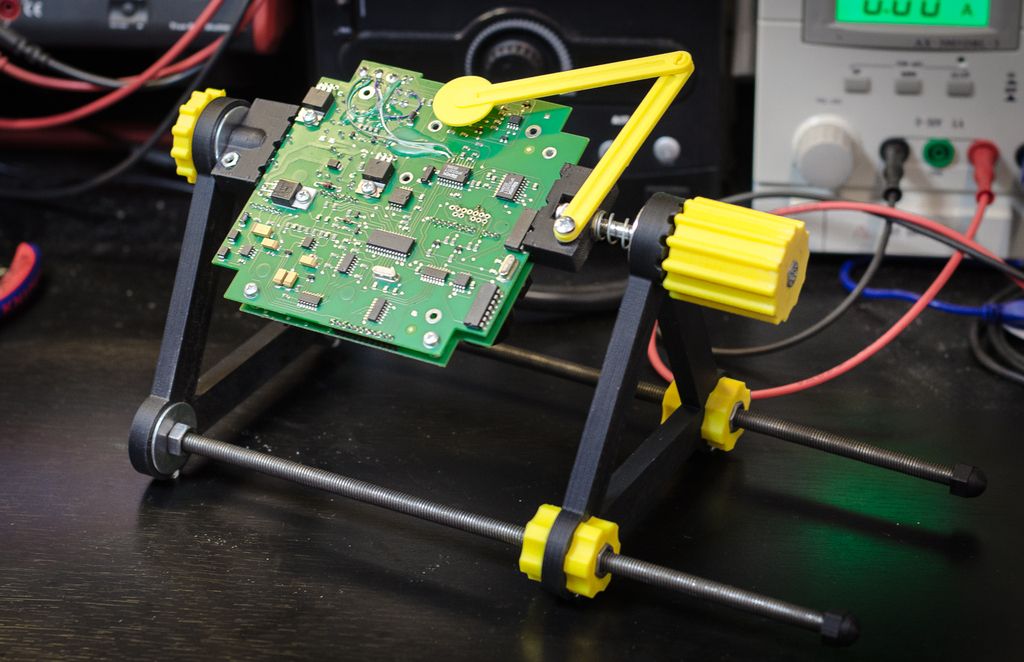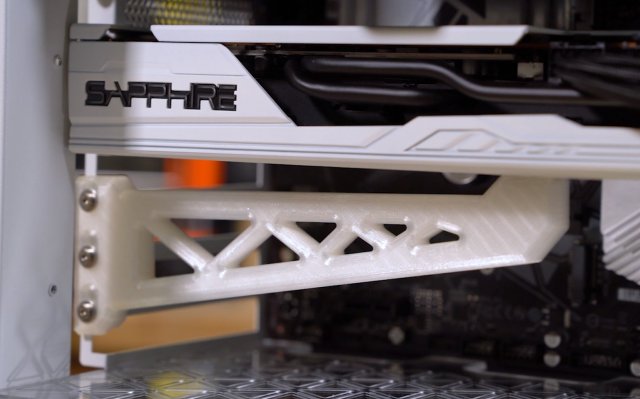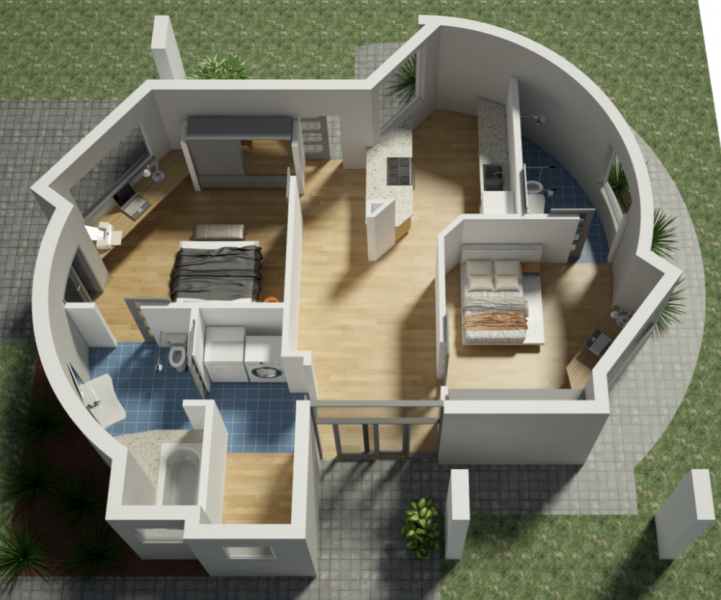3D printing powder bed
The Complete Guide to Laser Powder Bed Fusion in 3D Printing
Published on September 3, 2019 by Alexandrea P.
All technologies part of the Powder Bed Fusion (PBF) family use a build platform containing powder material to additively manufacture a part – the powder can be polymers or metals. It was during the 1990s that several companies began exploring Powder Bed Fusion (PBF) for metal: metal powder particles were melted using a heat source such as a laser or electron beam to form a more or less complex part, layer by layer. Today, we will focus on Laser Powder Bed Fusion (LPBF), which, as its name suggests, uses a laser to additively manufacture a metal part.
In 1994, EOS patented its process called Direct Metal Laser Sintering (DMLS), while in 1995 the Fraunhofer Institute introduced the term SLM for Selective Laser Melting. The two techniques are similar, however to avoid any confusion we will use the term Laser Powder Bed Fusion (LPBF). The terms can seem confusing, DMLS uses the word sintering when in fact it works by melting. Similarly, PBF uses the word fusion, when you cannot melt a plastic, you can only sinter it. However, Selective Laser Sintering (SLS) is part of the PBF family.
Image via Fraunhofer ILT, Aachen, Germany
What you should remember is that the difference between sintering and melting is quite simple: melting involves moving from a solid to a liquid state thanks to the high-temperature of the heat source; sintering does not allow the material to reach its liquid state because the temperature of the heat source is not high enough. In the case of sintering metal, the metal particles are agglomerated together, but the result is a fairly weak part. To illustrate this point, let’s take the example of stacking apples: there will always be a gap between two fruits. The 3D printed parts will therefore have a low mechanical strength, unlike fusion (i.e. melting) where the material, because it reaches its liquid form, fills these holes.
How does Laser Powder Bed Fusion work?
Like any 3D printing technique, the design of a part begins with the creation of the 3D model using CAD software. The part is then cut into a multitude of layers by a slicer – in this case, the thickness of a layer generally varies between 20 and 60 microns.
In order to start the printing process, the 3D printer fills its chamber with an inert gas and then heats it to the optimal printing temperature. A thin layer of powder is then applied to the build platform, according to the layer thickness previously defined by the software. The fiber optic laser (200/400 W) then scans the cross-section of the part, melting the metal particles together. When the layer is finished, the platform moves down, allowing another layer of powder to be added. The process is repeated until the final part is obtained.
The 3D printer must then be allowed to cool and the unmelted powder removed from the tray to see the printed part. The part is attached to the build plate thanks to printing supports; Unlike SLS technology, these supports are recommended because they reduce the warping and distortion phenomena observed at high temperatures.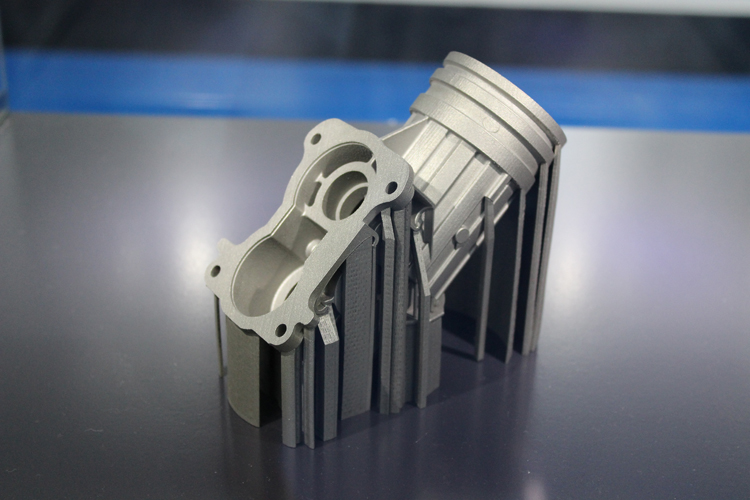 They are generally removed by cutting or machining methods or by wire electro-erosion. The parts can be heat treated to reduce residual stresses and improve mechanical properties. Further post-processing can involve CNC machining steps and polishing processes to offer a better surface quality.
They are generally removed by cutting or machining methods or by wire electro-erosion. The parts can be heat treated to reduce residual stresses and improve mechanical properties. Further post-processing can involve CNC machining steps and polishing processes to offer a better surface quality.
Post-processing steps can be more or less important depending on the results you wish to achieve on your final part
Materials and Applications of Laser Powder Bed Fusion technology
As you will have understood, LPBF uses metallic powders to design more or less complex parts. Metallic and alloy materials such as stainless steel, cobalt-chromium, aluminium, titanium and inconel are most often used. Some precious metals (gold, platinum, silver) are sometimes used, but almost exclusively in the jewellery sector. The strength of the parts obtained is comparable to that obtained by casting or machining techniques. LPBF is one of the few additive manufacturing technologies to be used in production.
The aerospace, automotive and medical (especially dental) sectors are very fond of this technology. It offers a geometric complexity that is impossible to achieve using conventional manufacturing methods while reducing their final weight and the number of components to be assembled using techniques such as topology optimisation. This results in shorter production times and very resistant custom parts. However, metal 3D printers and metal powders are very expensive and do not allow the manufacture of very large parts.
A 3D printed metal part | Image via Mercedes-Benz
The Main Market Players
One of the technology pioneers is the German EOS with its EOS M range, which offers a complete production solution for any industrial company. The company was joined by 3D Systems in 2013 following the acquisition of the French company Phenix Systems, which specializes in the development of DMLS machines. Of course, the German company SLM Solutions, but also Trumpf, Renishaw and the Italian company Sisma are some important players. If you are looking for more manufacturers of LPBF 3D printers, have a look at our listing of the main market players of metal AM systems HERE.
If you are looking for more manufacturers of LPBF 3D printers, have a look at our listing of the main market players of metal AM systems HERE.
Was this guide useful? Let us know in a comment below or on our Facebook and Twitter pages! Sign up for our free weekly Newsletter, all the latest news in 3D printing straight to your inbox!
What is Powder Bed Fusion? Process Definition and Advantages
Powder bed fusion (PBF) is an additive manufacturing process and works on the same basic principle in that parts are formed through adding material rather than subtracting it through conventional forming operations such as milling. The PBF process begins with the creation of a 3D CAD model, which is numerically 'sliced' into several discrete layers. For each layer, a heat source scan path is calculated which defines both the boundary contour and some form of fill sequence, often a raster pattern since the heat source is typically an energy beam (e.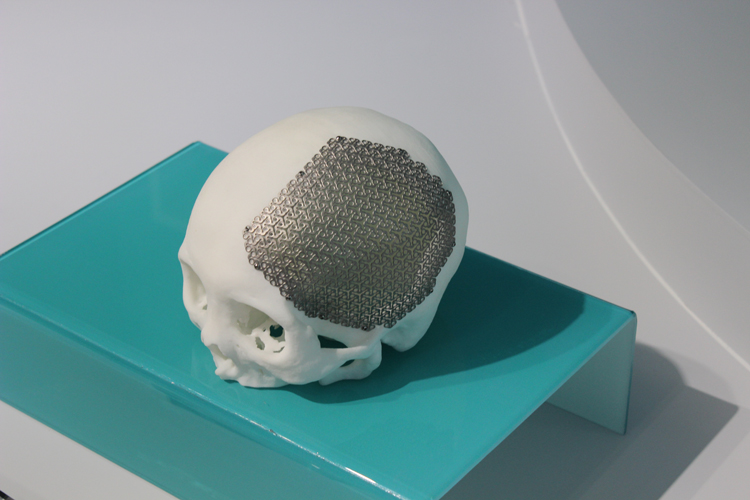 g. a laser).
g. a laser).
Click here to see our latest technical engineering podcasts on YouTube.
Each layer is then sequentially bonded on top of each other. PBF processes spread powdered material over the previously joined layer, ready for processing of the next layer hence the manufacturing is discrete rather than continuous (though each layer is fully consolidated to adjacent layers). A hopper supplies the powdered material which is then spread uniformly over the powder bed build platform area via a roller or blade. The optimal thickness of each layer of spread powder is dependent on the processing conditions and material used, but values of 25 to 100µm are common.
There are several variants of PBF, which are designated by the heat source used and the type of material joined. The two dominant types are laser beam (PBF-LB) and electron beam (PBF-EB) and have trademarked technologies under each. Each variant offers advantages and disadvantages, so suitability should be weighed on an application by application basis. Examples of are listed below:
Examples of are listed below:
Selective Laser Sintering (SLS)
SLS is a trademarked term and is PBF-LB. The process typically sinters powdered polymer materials such as nylon and polyetherketoneketone (PEKK).
Selective Laser Melting (SLM)
SLM is a trademarked term and comparable to SLS in that a laser is used to provide heat (therefore falling under PBF-LB), however the laser fully melts the powder rather than sintering it. The process is applied to metal powders such as: aluminium alloys; titanium and its alloys; and stainless steel. More exotic metals (e.g., tungsten) can be processed but tend to be more application based. An inert atmosphere (typically argon) is included in the build chamber to prevent oxidation and/or nitriding of the consolidated material.
Direct Metal Laser Sintering (DMLS)
DMLS is a trademark of EOS GmbH, a German additive manufacturing company and is similar in operation to SLM. Despite the term ’sintering’ being used, full melting is achieved.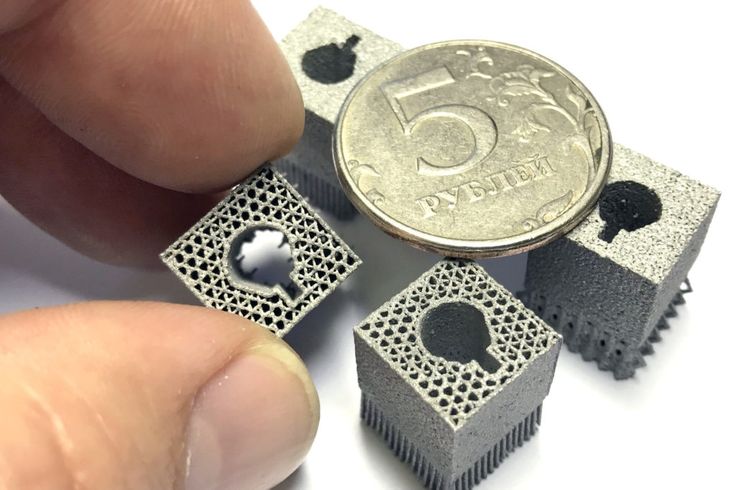 TWI have the distinction of being the first UK entity to have a certified process for manufacturing via this technology.
TWI have the distinction of being the first UK entity to have a certified process for manufacturing via this technology.
Electron Beam Melting (EBM)
EBM is a comparable process to SLM, replacing the laser with an electron gun (hence a PBF-EB process). Owing to the use of an electron beam, the build chamber utilises a vacuum instead of an inert atmosphere, though a small amount of inert gas (typically helium) is used to allow better process control.
Post processing of PBF parts is commonly required to better enable them in their intended applications: this is particularly true for metals and alloys. This might occur for the following reasons:
- Improve mechanical properties (via heat treatment)
- Reduce residual stress (via heat treatment)
- Improve surface finish (via chemical or laser polishing, and/or abrasive grit blasting)
Power bed fusion advantages include:
- Reduced material wastage and cost (superior buy-to-fly ratio)
- Improved production development times
- Enablement of rapid prototyping and low volume production
- Capable of building functionally graded parts
- Fully customised parts on a batch by batch basis, eliminating fixed designs
- Good resolution when compared to other additive manufacturing processes
- Efficient recycling of un-melted powder
- Ability to join many material grades, including ceramics, glass, plastics, metals and alloys
- Elimination of the need for machining fixtures
PBF processes are used across a wide range of industrial sectors for numerous applications.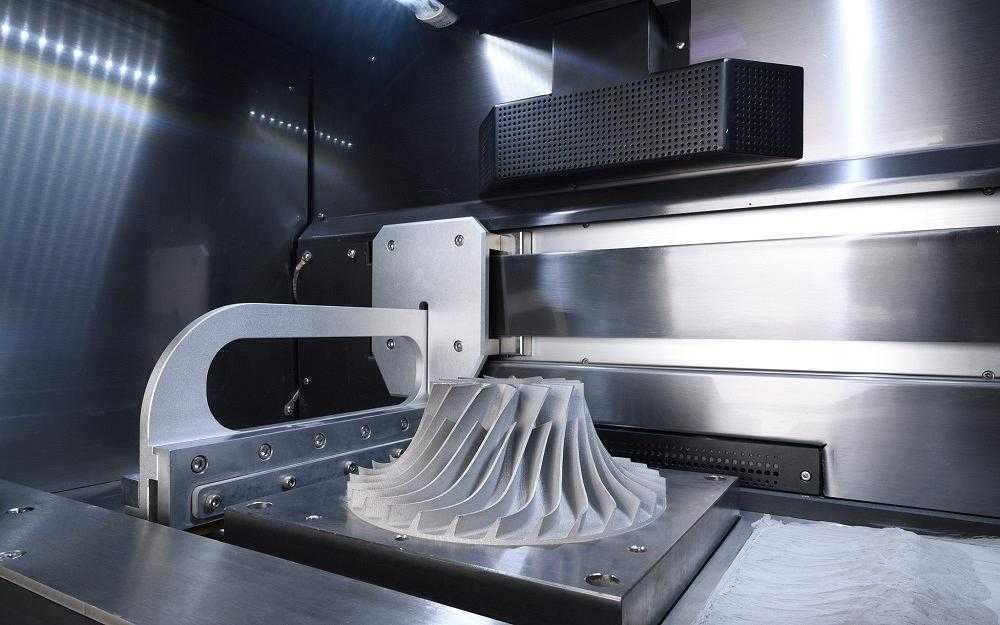 For example, the process is implemented by the medical sector for making customised orthopaedic components, such as titanium alloy cranial or acetabular implants.
For example, the process is implemented by the medical sector for making customised orthopaedic components, such as titanium alloy cranial or acetabular implants.
From an aerospace perspective, PBF processes are finding much interest and use for military and commercial aircraft. Examples of this include the PBF manufactured fuel nozzle on General Electric’s GE9X engine, which is used on Boeing 777 aircraft. The GE9X is the largest turbo-fan engine produced and the additively manufactured nozzle is five times more durable than previous versions [1]; the Boeing 777, with its two GE9X engines, includes 300 additively manufactured parts [2].
Swedish automotive manufacturer Koenigsegg has implemented PBF techniques throughout the manufacturing process of its latest hypercar, the ‘One:1’, from using rapid prototyping to ensure various details of the car looked and worked as envisioned, to implementing it to manufacture metal parts for production vehicles. Production parts include turbocharger housings, exhaust components, air ducts and interior mirrors [3]. Additive manufacturing processes enabled a reduction in material waste and costs for Koenigsegg. For lower production runs (as is common with high-end cars), building complex parts by additive manufacturing is cheaper, quicker and more efficient than building the necessary tooling for production of certain complex parts, which is common in the automotive industry [3].
Additive manufacturing processes enabled a reduction in material waste and costs for Koenigsegg. For lower production runs (as is common with high-end cars), building complex parts by additive manufacturing is cheaper, quicker and more efficient than building the necessary tooling for production of certain complex parts, which is common in the automotive industry [3].
How Can TWI Help?
TWI has a long history of working with its Members, and on collaborative projects, across a range of industry sectors, to assist in additive manufacturing: this is supported by employees who have considerable collective experience working in several areas of utilising the various technologies in wide ranging applications.
Please contact us to learn more:
Additive Manufacturing
TWI provides companies with support covering every aspect of metal additive manufacturing (AM), from simple feasibility and fabrication projects to full adoption and integration of metal AM systems.
Laser Metal Deposition
TWI has been developing LMD technology for the last ten years. For full details of our capabilities in this area, and to find out more about the process and the benefits it can bring to your business.
Laser Powder Bed Fusion at TWI
TWI has been developing LPBF technology over the last ten years.
- https://www.ge.com/reports/post/91763815095/worlds-first-plant-to-print-jet-engine-nozzles-in/
- https://www.3dnatives.com/en/boeing-777x-300-3d-printed-parts-290120205/
- https://www.digitalengineering247.com/article/koenigsegg-harnesses-additive-manufacturing-for-the-one1/
Machine tool Powder bed and inkjet head 3D printing Manufacturing Selective laser melting, honeycomb technology, metal, 3D Printing, selective Laser Melting png
Machine tool Powder bed and inkjet head 3D printing Manufacturing Selective laser melting, honeycomb technology, metal, 3D printing, selective laser melting pngtags
- metal,
- 3D printing,
- selective laser melting,
- seal,
- printer,
- bed powder and inkjet head 3d printing,
- production,
- machine,
- laser scanning,
- laser cut,
- laser,
- dmg Mori Aktiengesellschaft,
- additive Production,
- honeycomb technology,
- png,
- transparent,
- free download
About this PNG
- Image size
- 630x472px nine0043 File size
- 140.
 49KB
49KB - MIME type
- Image/png
resize PNG
width(px)
height(px)
License
Non-Commercial Use, DMCA Contact Us
- Inkjet printing press Large-format printer Printing press, printer, electronics, digital, banner png 3908x2620px 1.96MB
- Laser cutting Laser engraving Computer CNC machine, textile, engraving, machine png 676x653px 290.15KB
- Paper 3D printer Xerox Printer, printer, electronics, computer, business png 1024x580px 454.4KB
- Laser cutting Laser engraving Fiber laser, others, angle, furniture, laser png 700x505px 317.4KB
- Printer paper CMYK color model, Printer, supplies, electronics, happy Birthday Vector Images png 2430x2422px 291.84KB
- Machine Heidelberger Druckmaschinen Printing press Laser cutting, printer, electronics, banner, digital Printing png 3264x2448px 2.43MB nine0006
- Hewlett-Packard Laser printing Printer HP LaserJet Pro P1102, hewlett-packard, electronics, computer, monochrome png 640x481px 281.27KB
- Laser cutting Laser engraving 3D printing, others, angle, rectangle, 3D Printing png 700x700px 19.87KB
- Hewlett Packard Enterprise Inkjet printing HP Slate 500 Laptop Laser printing, HP printers, angle, electronics, computer png 790x856px 635.58KB
- Large-format printing printer Dye-sublimation printer MIMAKI ENGINEERING CO., LTD., others, ink, lithography, printer png 1186x1023px 369.19KB
- Rapid prototyping 3D printing Prototype Computer Icons, printing, rectangle, black, business png 900x900px 11.85KB
- photocopier machine business stationery copier, copier, angle, people, canon png 1000x1000px 299.65KB
- Selective laser sintering machine 3D printing Selective laser melting, printer, electronics, public Relations, industry png 1200x748px 266.
 11KB
11KB - Machine tool Laser cutting Laser processing, plotter, engraving, computer Numerical Control, machine png 1500x1500px 1.32MB nine0006
- Hewlett-Packard Multifunction Printer HP LaserJet Pro M227 MFP Laser printing, Multifunction printer, canon, electronic Device, fax png 1000x750px 166.47KB
- Hewlett Packard Enterprise printer Laser printing Toner cartridge HP LaserJet, printer, white, electronics, ink Cartridge png 2898x2280px 1.16MB
- Laser cutting Laser engraving 3D printing, Laser cutting, electronics, engraving, electronic Device png 802x401px 204.53KB nine0006
- Label printer Barcode printer Thermal printing, printer, electronics, label, retail png 755x756px 471.57KB
- Laser cutting Fiber Laser Laser engraving, cutting machine, engraving, metal, metal png 900x600px 357.18KB
- Metal, Laser Cutting, Computer Numerical Control, Machine Tool, Fiber Laser, CNC Router, Sheet Metal, Laser Engraving, Laser Cutting, Computer Numerical Control, Computer Monitor Accessory png 1067x497px 235.22KB
- Laser cutting Computer Icons Metal, laser, angle, rectangle, service png 1200x1200px 54.17KB
- Large-format printer Offset printing Vinyl banners Digital printing, printer, ink, electronics, digital png 1024x625px 430.
 24KB
24KB - Dot-matrix printing Epson dot-matrix printer, printer, electronics, computer, electronic Device png 1130x1188px 306.42KB
- Laser cutting Machining, Laser cutting, symmetry, monochrome, steel png 640x640px 161.21KB nine0006
- Xerox multi-function printer copier Paper, printer, angle, electronics, ink Cartridge png 469x500px 154.71KB
- Laser cutting 3D printing Industry, technology, electronics, text, service png 512x512px 4.92KB
- Multi-function printer Hewlett Packard Enterprise HP LaserJet HP Deskjet, HP Printers, electronics, black, electronic Device png 742x742px 204.
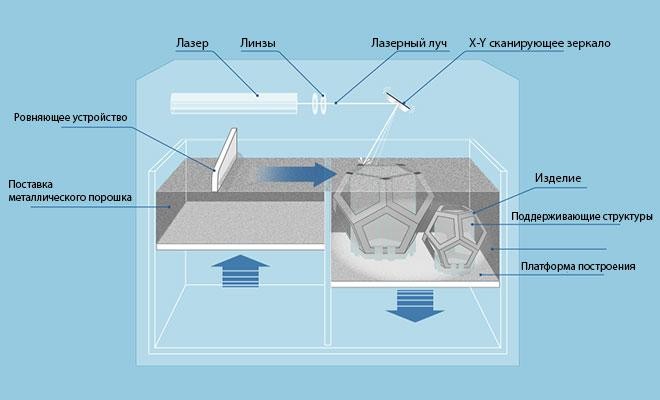 63KB
63KB - Multi-function printer copier Konica Minolta scanner, printer, electronics, electronic Device, fax png 600x840px 477.22KB nine0006
- Barcode printer Label printer Zebra Technologies Printing, zebra, electronics, animals, label png 945x945px 205.87KB
- 3D printing Selective laser sintering Selective laser melting Material, powders, angle, electronics, material png 960x500px 90.64KB
- 3D printing Metal Selective melting laser printer, printer, electronics, material, metal png 800x633px 488.57KB
- 3D printing Metal 3D Systems Manufacturing, metal surface, steel, material, metal png nine40x940px 294.
 63KB
63KB - 3D printing filament 3D Kreator Business, printer, 3D Computer Graphics, people, small Appliance png 662x668px 361.91KB
- Machine tool Laser cutting Laser engraving, technology, angle, electronics, material png 1498x1497px 698.22KB
- Paper printer Laser printing Toner, Cartoon printer, cartoon Character, supplies, ink Cartridge png 2252x1574px 646.74KB
- Textile Folding Machine Woven fabric, textile, office, fabric png 700x611px 414.62KB nine0006
- 3D printing Stereolithography Formlabs Fused filament fabrication, printer, electronics, 3D Computer Graphics, orange png 1200x800px 389.
 91KB
91KB - 3D printing 3D modeling Printer Paper, printer, blue, angle, electronics png 800x600px 7.27KB
- Laser engraving Laser cutting Epilog Laser, others, engraving, business, laser png 800x626px 375.51KB
- Multi-function printer Small office/home office Inkjet printing, SCAN, electronics, canon, office png 3000x2823px 2.57MB nine0006
- Laser printing Printer driver Multi-function printer, printer, computer Network, electronics, monochrome png 619x473px 192.26KB
- Robot welding Robot welding Machine KUKA, address, electronics, metal, industry png 1000x1200px 1.
 58MB
58MB - Canon paper Printer driver Inkjet printing, Inkjet Printers, computer Network, ink, electronics png 3100x2300px 845.09KB
- Printer Laser printing Toner refill Toner cartridge, printer, ink, electronics, ink Cartridge png 600x600px nineteen7.65KB
- Manufacturing Support Implementation Technical Support Computer project, others, angle, service, computer png 591x591px 38.79KB
- 3D Circle, 3D Printing, Manufacturing, Digital Light Processing, Stereolithography, Selective Laser Melting, Powder Coat And Inkjet Head 3D Printing, Manufacturing, 3d Computer Graphics, 3d Printing, Area png 1728x1728px 90.22KB
- Laser engraving Laser cutting, laser, miscellaneous, angle, laser png 1244x1052px 736.67KB nine0006
- Machine tool Laser cutting Fiber laser Laser engraving, Laser cutter, machine Shop, automotive Exterior, machine png 750x392px 241.5KB
- Machine tool Laser cutting Laser engraving, others, miscellaneous, textile, machine png 2477x1859px 883.13KB
- Laser scanning scanner Faro Technologies Inc 3D scanner, others, 3D Computer Graphics, surveyor, laser png 768x632px 159.51KB
3D Printing & Additive Manufacturing
At every step in the 3D Printing and Additive Manufacturing process, temperature control and regulation is critical to ensure high quality parts. Optris offers a complete family of infrared temperature sensors and three shortwave infrared cameras optimized for temperature measurement on metal objects. For temperature monitoring in additive manufacturing, shortwave infrared cameras are becoming increasingly popular because they can easily monitor the temperature of the entire weld puddle and monitor temperature data at the hottest spot without the need to clearly aim at a specific point sensor. Optris IR cameras are now being used in many areas of additive manufacturing as an essential tool to improve productivity and product quality. nine0059 ©Zyabich - stock.adobe.com
For temperature monitoring in additive manufacturing, shortwave infrared cameras are becoming increasingly popular because they can easily monitor the temperature of the entire weld puddle and monitor temperature data at the hottest spot without the need to clearly aim at a specific point sensor. Optris IR cameras are now being used in many areas of additive manufacturing as an essential tool to improve productivity and product quality. nine0059 ©Zyabich - stock.adobe.com
Laser metal deposition is an additive manufacturing process that uses a laser beam to form a pool of molten metal on a metal substrate. The metal powder is continuously fed into the melt pool through a nozzle. The temperature sensor must be able to withstand the high energy density of the laser or its reflection. The process mainly uses a 1064 nm solid state laser or, in some cases, a CO2 laser (10.6 µm). The distribution of heat behind the beam is an indication of good or poor welding quality. Therefore, thermal imagers such as the PI 08M provide the most information about the process compared to a single point pyrometer indicating the temperature of only one heat spot. nine0059
nine0059
Recommended devices:
Thermal imagers optris PI 08M, optris PI 05M or optris PI 1M
. The body of the designed 3D part is created by selectively melting and resolidifying metal powders in each layer. The building plate is lowered slightly and a new layer of powder is deposited. nine0059
To reduce the energy required to reach the required melting temperature of the powder, the layer is usually heated in advance. To obtain a high-quality object with a homogeneous metal structure, it is necessary and important to evenly distribute heat. An Optris thermal IR scanner such as the PI 640i can measure the bed temperature and this is important information for a machine in good or bad condition. In addition, individual regions of laser melting can be measured with a short wavelength camera such as the PI 08M. nine0059
Recommended devices:
Lazer power: Optris Pi 05M or Optris Pi 08m
Powder: Pyrometer LT
SUPPLY ADDIVE DEDIDENTIONAL Production is combination. welding and additive surfacing. The metal wire is melted using an electric arc and applied layer by layer until the desired three-dimensional shape is obtained. The heat of the previous layer can affect the shape of the next one. Temperature control during the welding process and information on heat distribution provide feedback on the quality of the welding process. nine0059
welding and additive surfacing. The metal wire is melted using an electric arc and applied layer by layer until the desired three-dimensional shape is obtained. The heat of the previous layer can affect the shape of the next one. Temperature control during the welding process and information on heat distribution provide feedback on the quality of the welding process. nine0059
Recommended devices:
Thermal imager optris PI 08M or optris PI 05M
Fused filament fabrication is a form of additive manufacturing in which filaments are fused together to form a solid part. It is an extrusion process in which an object is created by layering molten material, often using carbon fiber composites. The building plate is lifted slightly and a new layer of filament is applied. One of the challenges for a quality 3D printed product is heat distribution across the base. Uneven temperature distribution can lead to undesirable shrinkage effects, especially for large objects.